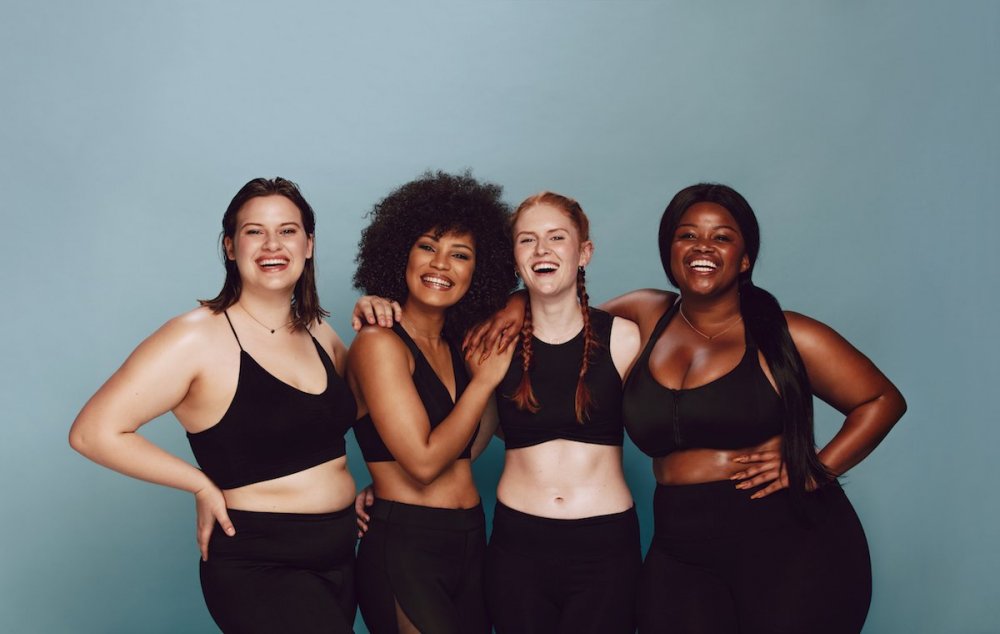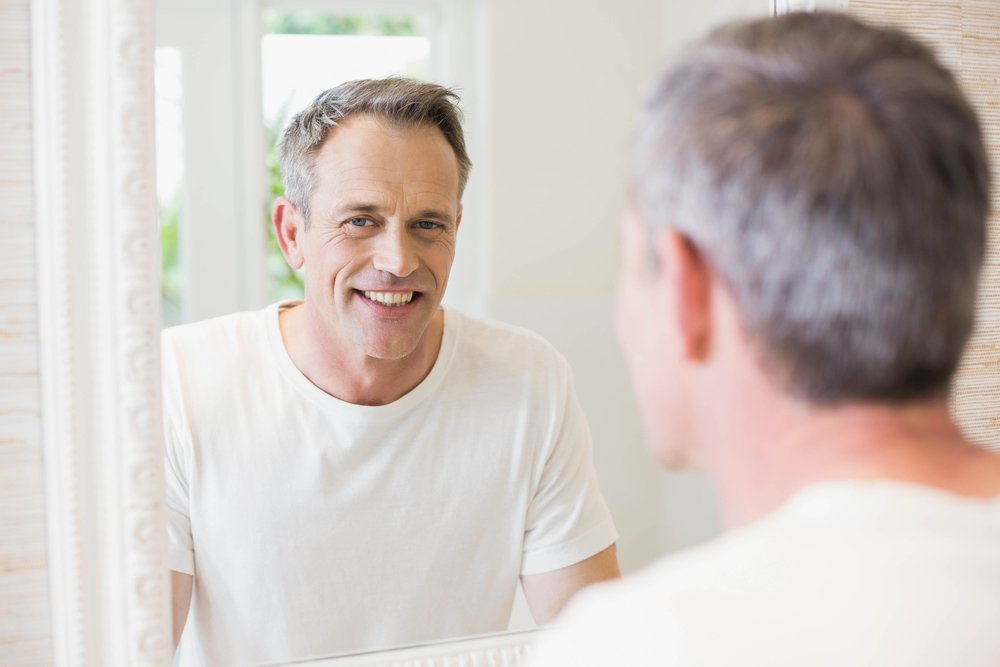If you find yourself in a comparison trap due to the constant media messages of an ‘ideal’ body type, you’re not alone. Sonia Vadlamani explains how a positive body image can help counteract the dissatisfaction we may feel towards our bodies and offers up eight steps for developing it.
Body image pertains to what people think and feel about their own body and shape. It is a complex perception, encompassing one’s emotions and resulting attitudes, beliefs and thought patterns regarding their appearance, body shape, weight and the way they move, etc. More and more people are struggling with maintaining a positive body image.
What is positive body image?
Typically, if an individual is satisfied with their body image, it’s known as positive body image. And having positive body image entails some or all of the following:
- Acknowledging one’s body for the way it is and accepting the way it looks as a ‘whole’ embodiment of themselves.
- Being grateful for what the body can do.
- Having a secure body image and leading a healthy lifestyle to nourish and strengthen it.
- Having a comprehensive outlook on beauty.
- Being confident and positive from within.
With media messages focused on specific body types regularly bombarding us, it’s easy to feel dissatisfied with our body and overall appearance. As I have experienced on a personal level, this dissatisfaction with one’s shape or form – also known as negative body image – not only makes you feel unattractive and affects psychological well-being, but it can also adversely affect your physical health.

Avoid comparisons and appreciate your body
However, during my efforts to improve my sense of satisfaction with my body, I learnt that a positive body image required me to understand that my self-worth and confidence came from within. I realized I need not be determined by my body type or appearance.
What is negative body image?
In contrast, negative body image refers to one’s dissatisfaction with their body and form. Those living with negative body image also tend to experience ‘body dissatisfaction’, or the disparity between an individual’s perceived current body size and their perceived ideal body size.
RELATED: Body positivity – loving my shape
Perceived or ‘self-rated’ health is a crucial predictor of both one’s physical and mental health. Indeed, an analysis of Norwegian data from a WHO survey by Eivind Meland et al revealed that that body dissatisfaction is a predominant indicator of perceived negative health. The unrealistic ‘standards’ for one’s weight and appearance that are prevalent today may contribute towards negative perceptions of body image, especially among adolescents.
Furthermore, a negative body image can lead to eating disorders such as binge eating, bulimia and anorexia, in addition to the health conditions like Body Dysmorphic Disorder (BDD) and anxiety.
8 steps to developing positive body image
If you’re struggling with body positivity, then changing how you perceive your body will not happen overnight. However, by following some or all of the following steps you can learn to appreciate and love the body you were born with, and begin to develop a healthier body image.
1. Accept that nobody is perfect
According to clinical psychologist Elizabeth Halsted, avoiding the perfectionism trap or ideals which are (nearly) impossible to achieve is one of the most crucial components of developing a positive body image. This involves reminding yourself constantly that beauty is not ‘skin deep’ and has more to do with how you feel and your state of mind. A quick review of people you admire can help reinforce the fact that everyone has flaws, and that those who embrace them instead of hiding them tend to have the most attractive personalities.
2. Change the way you think about your body
Implement positive self-talk and acknowledge the great aspects of your body. Practise saying, “I am proud of the changes my body has endured” instead of, “I hate my cellulite”, and “I have strong legs which support me through the day”, instead of, “I have flabby thighs”. This will also help you see yourself as a ‘whole’ person, rather than focusing solely on less-than-perfect body parts.
3. Consciously avoid the comparison trap
It’s alarmingly easy to compare ourselves with the ideas of the venerated and 'perfect' bodies displayed on billboards, advertisements and social media. However, avoiding such social comparisons is one of the three intervention measures that can aid in developing a positive body image, as per researchers Posavac, et al.
The allegation that media imposes unreasonable standards of beauty and appearance on consumers is not new by any means, but the advent of social media has amplified the effect. Try developing a critical view of the messages and ideas that social media tries to impose on you.
“Avoiding the perfectionism trap or ideals which are impossible to achieve is one of the most crucial components of developing a positive body image.”
If the messages being conveyed make you feel bad about your body, it may be in your best interest to avoid these sources altogether. Additionally, you can also try being vocal about the lack of representation for more realistic body types, so that the advertisers and brands may take note and bring the necessary change by embracing body positivity.
4. List 10 things you like about yourself
Jot down ten things that you admire about yourself that are not related to your appearance or body weight. Refer to the list every day and add more points as you go. As Nataly Kogan – author of Happier Now points out – treating oneself as a friend allows them to relax their degree of self-criticism and helps them realize their strengths and the perceived nature of their ‘flaws’.

Body positivity: love what you see in the mirror
5. Be nice to yourself
Practising self-love consistently can boost body positivity by enabling one to realize that they are worthy of love and praise. The benefits of self-compassion are backed by research. Indeed, being kind to yourself and using self-reassurance can improve heart health, reduce signs of stress and anxiety, and instill better decision-making skills. Make positive self-talk a daily practice and create a self-care ritual that makes you feel appreciated and valued.
RELATED: How to practise self-compassion – 6 proven techniques
6. Reorganize your closet
People with body dissatisfaction issues often hold on to clothing in different sizes, hoping or fearing they’d need it one day ‘just in case’. Renowned body image counsellor Lori Osachy likens this scenario to being trapped in a “negative body image prison”, and recommends reorganizing your closet with clothes that fit you currently so that you feel more comfortable and beautiful the way you are.
7. Create a healthy lifestyle
Research shows that efforts to build a positive body image can help individuals fulfill their health goals and improve their lifestyle. Instead of chasing the imposed standards of the perfect body type, try focusing on building an active and healthful lifestyle. Including wholesome, gut-friendly foods like lean meats and fresh produce in your diet, along with regular exercise can contribute towards an improved sense of satisfaction with one’s body image.
8. Spend time with positive-minded people
Being around people who refrain from being judgmental or stereotypical, and that help you remember that there is more to you than your physical attributes can do wonders for body positivity. Find optimistic people who have a bright outlook towards life. Indeed, our choices and decisions are largely the result of the people who surround us and influence us.
Round-up: positive body image
Today’s fast-paced and consumerism-driven media inundates us with certain ‘ideals’ for body weight, size and appearance. Body dissatisfaction is often deeply ingrained from a tender age, and thus developing a positive body image may require you to oppose your default mode of self-perception at first.
Cultivating a positive body image can be hard and may require you to constantly reevaluate how you view yourself but is certainly doable and rewarding. Incorporate the steps above in your daily routine to gradually embrace body positivity. •
Main image: shutterstock/Jacob Lund
happiness.com | The fine art of being: learn, practise, share
Are you a happiness.com member yet? Sign up for free now to:
■ enjoy our happiness magazine with practical life tips
■ share and support in our happiness forum
■ self-develop with free online classes in our Academy
Written by Sonia Vadlamani
 Fitness and healthy food blogger, food photographer and stylist, travel-addict and future self journaler. Sonia loves to write and has resolved to dedicate her life to revealing how easy and important it is to be happier, stronger and fitter each day. Follow her daily pursuits at FitFoodieDiary or on Instagram.
Fitness and healthy food blogger, food photographer and stylist, travel-addict and future self journaler. Sonia loves to write and has resolved to dedicate her life to revealing how easy and important it is to be happier, stronger and fitter each day. Follow her daily pursuits at FitFoodieDiary or on Instagram.




Join the conversation
You are posting as a guest. If you have an account, sign in now to post with your account.